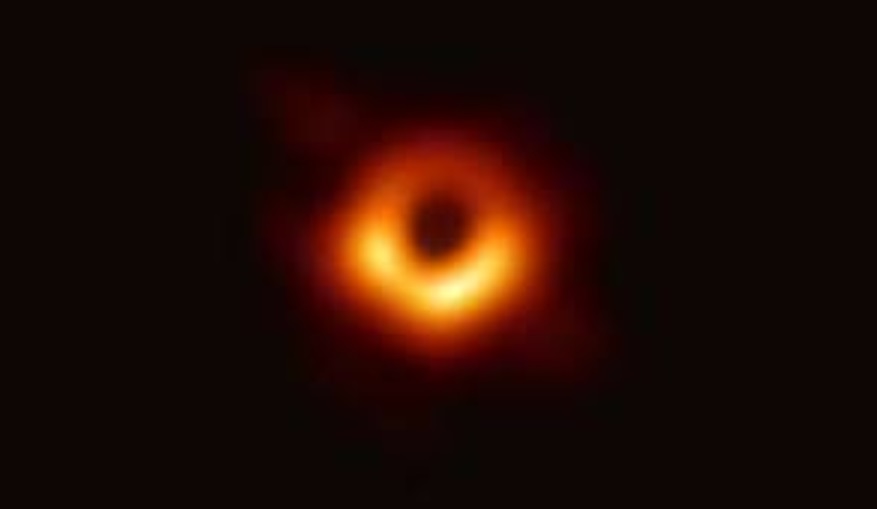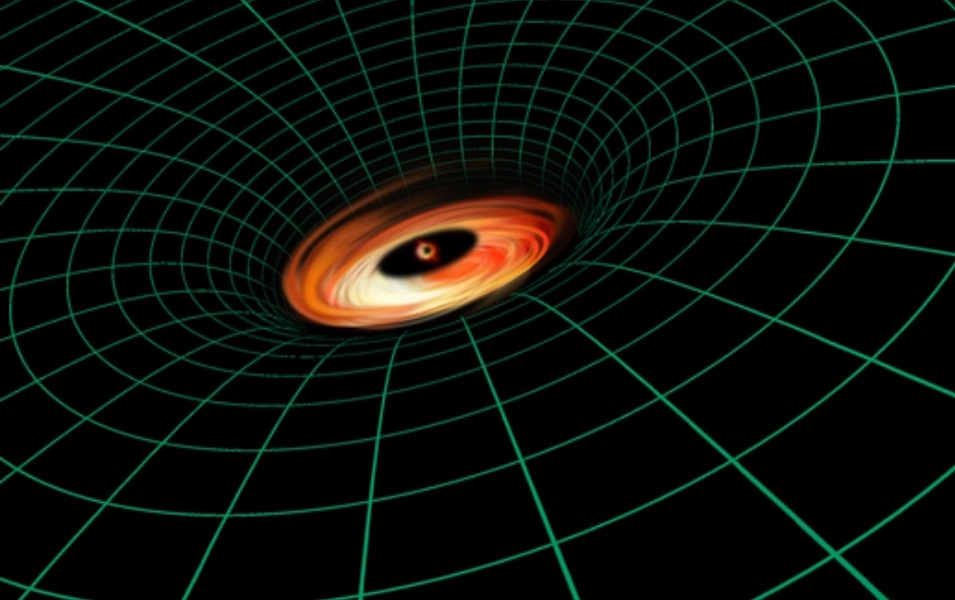
No way! Stop the presses! NASA’s Hubble Telescope has detected a supermassive black hole that defies existing theoretical models and general relativity! The black hole is located in a “jellyfish”-like galaxy known as ESO 137-001 – a galaxy with a tail made up of gas stretching 260,000 light-years across space. Astronomers first discovered the “jellyfish” in 2014 via the Hubble Telescope and Chandra X-ray Observatory. The recently-discovered black hole is 250 million times heavier than the sun, and it lies in the center of the “jellyfish” – over 220 million light years away! However, no matter how far way, it reveals some theory-shattering realities.

A model of the black hole at the center of Galaxy ESO 137-001, with a rotating accretion disk, with no matter entering. Why does it move at only one tenth the speed of light inside the event horizon?
Theoretically (according to everything we thought we knew), this black hole should not exist. Why? Surrounding it is an accretion disk, rapidly moving around its edge, according to information published Thursday (2-11-19) in Monthly Notice – a journal of the Royal Astronomical Society. What is most mysterious and rule breaking is the stability of the accretion disk within the black hole’s event horizon. Rather than being sucked into the black hole at light speed (as the laws of physics and general relativity require), the material in the disk continues to orbit the black hole, perpetually. More mysteriously, the accretion disk is moving at a speed only one tenth the speed of light. Yes! The event horizon, as we know, is the point at which the force of gravity generated by a black hole is so strong that it pulls matter into it at the speed of light, making it impossible for the matter to escape. Thus, a collision course with the singularity is inevitable. Yet, in galaxy 137-001, none of that is happening. The accretion disk is not being sucked in and, at a turtle-speed of 29,979,245.8 m/s (relative to what’s expected), it’s far too slow for Einstein’s theories.
“Say it ain’t so, Einstein!” Is astrophysics, cosmology, general theories of relativity, worm holes, black holes, white holes, and all other holes now in question? Are your Rosen bridges real, or did you, perhaps, have one too many to drink? Have we had the intergalactic wool pulled over our eyes by a man with funny hair? Has everything we thought we knew about the universe been wrong…for over a hundred years? Maybe so. Like Bob Dylan famously sings, “The times, they are changin.” And now, “The universe, it is a changin’ too!”
You may also like these!









